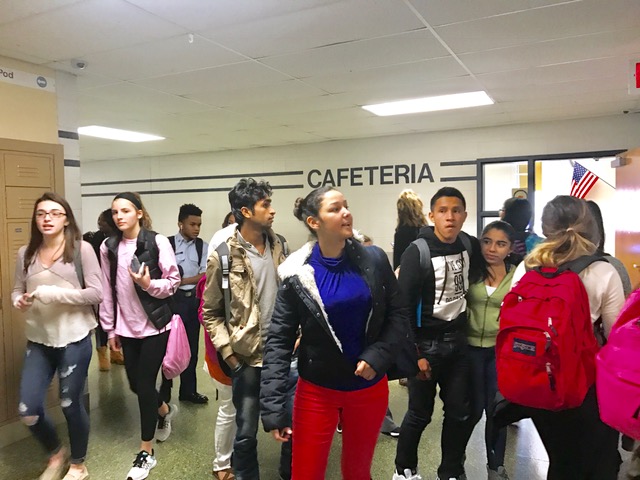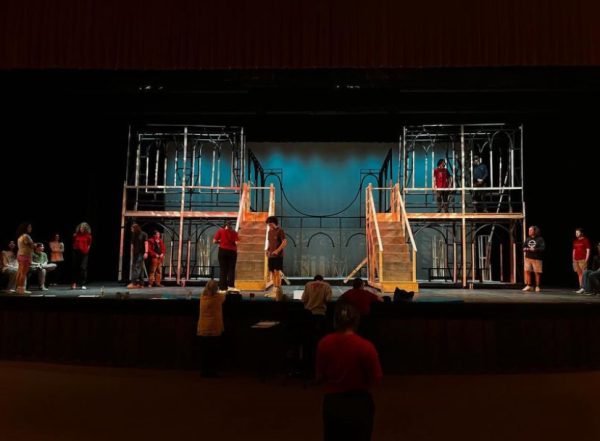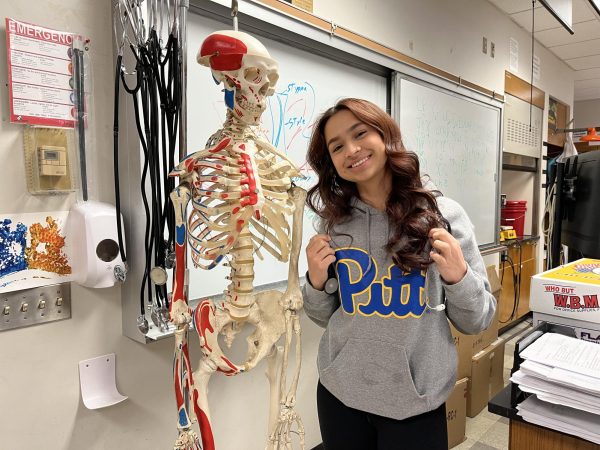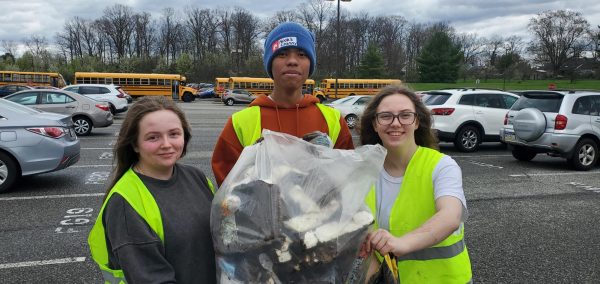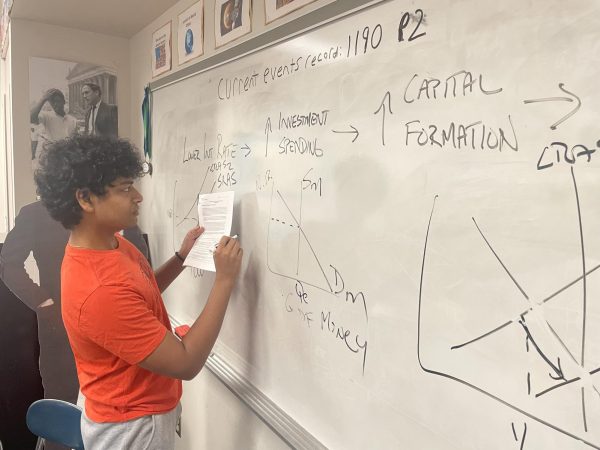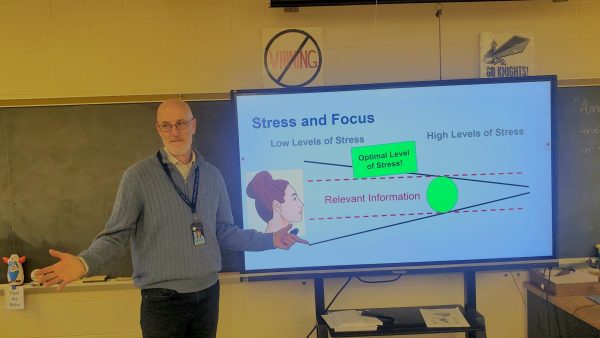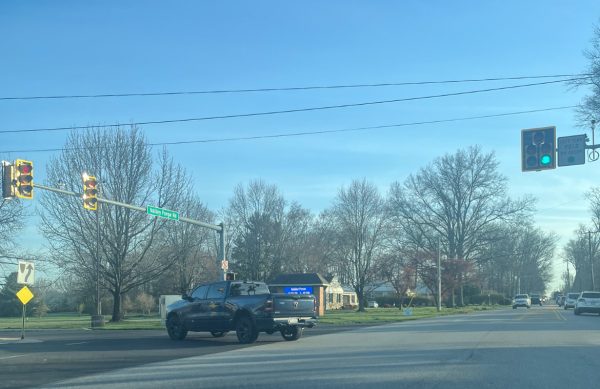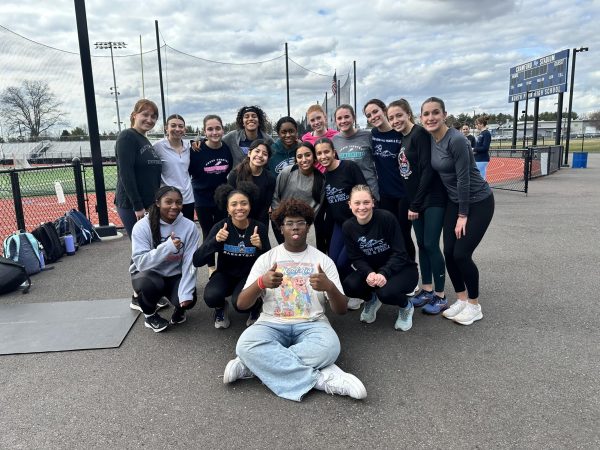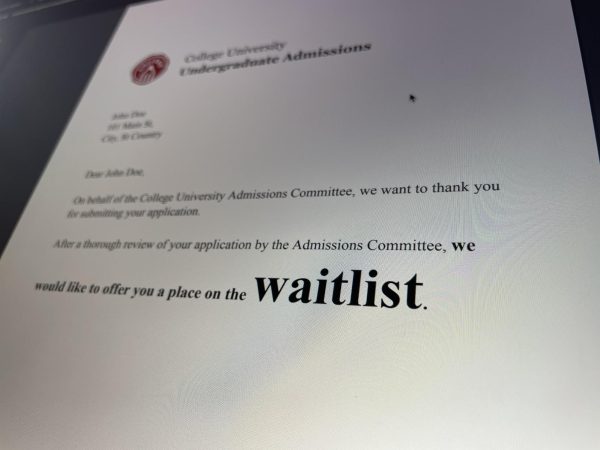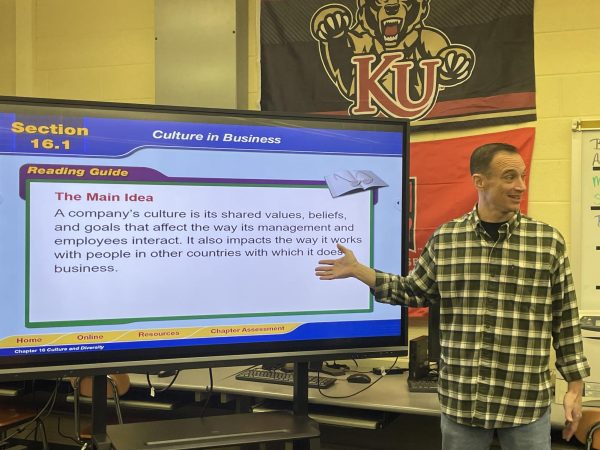When students fight: Examining school culture and climate
Students leave the cafeteria during class transition time and make their way to their next class.
TOWAMENCIN- For most students at North Penn High School, there is a mutual feeling of connection and pride towards the school’s community. However, during the first few months of the 2016-2017 school year, a small portion of the student body struggled to encounter such feelings, which led to several incidents of fighting.
According to Mr. Todd Bauer, Principal of NPHS, fights were most prevalent during the month of October, while activity was relatively calm during November. As of November 3rd, Bauer stated that there had been eleven police events at NPHS, nine of which involved either only females or primarily sophomores.
“I think it’s of course inappropriate, dangerous, and all of those things, but I think it’s really an immature way of solving your issues. I’d like to think that the high school is responsible for transitioning kids from adolescence to adulthood, and adults don’t typically solve their problems that way,” explained Bauer.
Stressing the importance of constructive decision making and coming to an understanding, Bauer noted that the fights typically don’t solve the issue and could result in serious injuries to both inside and outside parties. Not only that, but the poor decision to confront a conflict through physical contact creates a volatile situation in a school with such a large student and staff body.
Mr. Stefan Muller, Assistant Principal at NPHS, explained that certain parts of the building In high-volume locations such as the cafeteria and E-Pod, face issues more than others because of sheer numbers. However, staff members have reached out, expressing their concern, and stepped up to the plate.
“There’s no question that when there are more eyes and more of a presence in an area, people are less likely to do something, not to say that it will be perfect and go away, but people in general are less likely to commit an infraction, whether it’s out in the street with hundreds of police officers or in a hallway with a handful or a dozen teachers keeping an eye out, specifically looking to make students feel safe,” explained Muller.
Aside from location, Muller explained that he believes the transition from middle school to high school, maturity, social media, and drama have been factors contributing to the situation.
“I think it’s more about that jump and that new start in going from the middle school to the high school. I think that the transition here is difficult for kids, but I think it’s a maturity issue. That’s not to say students who are juniors and seniors don’t get in fights and don’t have social media issues; however, in my experience, I have typically seen it with younger grades,” stated Muller.
Because they’re naturally the most immature group due to age and lack of life experience, Muller explained that fights are mainly associated with sophomores.
Explaining that it seemed like NPHS had more fights with sophomores involved in the first couple of months, Mr. Ray Wilson, Safe Schools Coordinator at NPSD, added that although some fights are spontaneous, relationships, a change in environment, and social media have sparked fights.
In response to the fights, Wilson explained that security officers have had more of a presence in the halls. He feels that the school is making great strides, continuously, to ensure the safety of all stakeholders in NPHS.
“If I have security guards that are out, I always bring subs in. I think it’s pretty safe here. We have 3,000 kids here, and I think with a school that size, we’re bound to get some issues. We have the good camera system now, and that really helps. I think kids might think twice about doing something because of the camera. Sometimes they don’t care, but it really helps us out a lot and helps the police out a lot with our cameras. We try to be out in the hallways. You can’t control what happens outside of the school,” explained Wilson.
Wilson also noted the support from the administration team, guidance counselors, and other staff members. According to Bauer, beyond meeting solely with administrators, a leadership team in the building composed of department chairs and other leaders has met to discuss the issue. Regardless of the causes, Bauer stressed that the focus has been more concentrated on how to fix the problem.
I don’t think it’s taking stricter punitive measures against kids. I think it’s to make the culture in the school more positive, more welcoming, and give the kids a sense of ownership of the building.
— Todd Bauer, Principal of NPHS
“I don’t think it’s taking stricter punitive measures against kids. I think it’s to make the culture in the school more positive, more welcoming, and give the kids a sense of ownership of the building. Make the students believe and know that it is their building. They are North Penn High School, and have them have a sense of pride in the building, and ultimately, they won’t tolerate the behavior [by] having kids police themselves,” stated Bauer.
In fact, Bauer stated that in almost every fight that has occurred this year, students have stepped in to try to stop it, which he said is the responsible thing to do. Not only that, but Bauer was proud to state that the fights haven’t really involved juniors or seniors, demonstrating their maturity and understanding of the consequences. However, he expressed his lack of appreciation towards students who film, encourage, or watch the conflict as it unfolds.
“I would like to think that our students take great pride in the school,” stated Bauer. “They understand that people and the adults in this building are on their side, and they’re trying to work with them. In response to that, I would hope that they help to maintain the civility in the building and really police themselves and not stand for that to let other kids know that this is unacceptable behavior. This is our school, and we’re not going to allow this.”
To compare, Bauer stated that in September of last year, there were six incidents of police involvement, while in September of this year there were eleven. Cumulatively, last year in October there was a total of fifteen events, while this year in October there was fourteen. However, these incidents are not exclusive to fighting, meaning they could involve simple assault, assault, harassment, weapons, theft, drugs, or drug paraphernalia.
Bauer explained that there have been more challenging behavioral incidents involving the sophomore class this year than there was last year and stated that it’s important to extend actions in terms of culture and climate to the younger grades.
Dealing with the sophomore class, Muller explained that the number of fights seems to be fairly large, but he attributed that feeling to being in the thick of it. Muller discussed that although discipline is a component of the responsibility as an administrator, the process of handling a fight proves to be a misuse of time.
“It’s a long process. Often times when a fight happens it’s an hour to an hour and a half of time that’s just consumed in that moment,” stated Muller. “Then there’s the follow up stuff after that when they do return: following up the student a few days after that, making sure everything is ok, checking with them in the hallways or cafeteria, and making sure that we’re all on the same page. It is a huge waste of resources if I can use that term. There are far more important things that we all want to be dealing with that come back to teaching and learning.”
Although the code of conduct has changed for minor infractions, Bauer explained that its changes have not affected the number of fights. Because he believes every situation is different, Bauer explained that he is not a firm believer in no tolerance policies, which is not to say he doesn’t believe in some consistency. In short, the consequences for fighting are the same.
In the case of a physical altercation, the police are notified, and their punishment is dependent upon on the severity of the actions. In most cases, students are suspended for an indefinite period of time. Five days into the punishment, there is a hearing with Bauer and the assistant principal to take things into consideration: student’s typical behavior, recent struggles, grades, and more. Bauer recognized that students make poor decisions once in a while, which lead to mistakes.
Expressing the importance of mentoring, Bauer explained that the middle schools are great partners in coming up with ways to build a sense of North Penn pride and getting everyone to appreciate North Penn.
“This is not an indictment on the lower levels, middle school or elementary school, but I think it’s all those things that I mentioned about culture and climate in the building and students taking responsibility for their actions and the actions of others, but instilling that sense of pride in the kids well before high school. I think kids need to come up to high school with the understanding that we’ve arrived, we’re young adults now, and we’re not going to act like this,” explained Bauer.
Bauer and Muller both stressed the importance upon the various implementations that have been leading to a more positive environment: LINK crew, Knights of Chivalry, the North Penn Pride Award, faculty and staff recognition each month, and more. While such pieces won’t provide an instant change, Muller explained that they provide a mindset change.
“We’re constantly looking for ways to connect students to the building,” stated Muller. “How do we get students, who don’t see North Penn as their home or as their home school or they see it as just a step in what they have in their life progression of what they have to do, how do we get them connected and feel a part of the North Penn High School community? What can we do? It’s a constant piece that we’re talking about.”
Bauer added that they’ve been creating ways to acknowledge the positive behavior instead of magnifying the negative behavior.
“If you highlight and raise up those people that are doing such great things, and we have so many of them, you want that to overshadow the negative to make people look down upon the negative behaviors,” stated Bauer.
We want zero fights and zero issues. That’s probably utopian. That’s probably not realistic, but that’s our goal: to have students have a purpose here
— Stefan Muller, Assistant Principal at NPHS
Hoping that there’s a reverberation in the building of positivity, Muller explained that the staff genuinely wants to empower students and support them throughout the search for their connection to the building. However, although cultivating such an environment is crucial, addressing the issue is equally important.
“There’s nothing wrong with drawing attention to something we need to fix. There’s no question about it. We want zero fights and zero issues. That’s probably utopian. That’s probably not realistic, but that’s our goal: to have students have a purpose here,” stated Muller.


